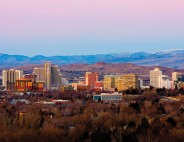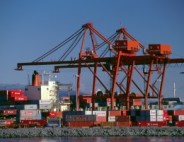
Canada: A Wealth of Opportunities; A World of Innovation
02 Sep, 2014
By Rachel Duran
According to the World Bank, Canada is one of the globe’s most multicultural countries with world-class universities, a universal health care system and clean and friendly cities, in addition to having the second highest standard of living in the G-20, as measured by GDP per capita.
The country has recently stepped up its efforts in international trade. A significant component in carrying out Canada’s trade ambitions has been the passage of trade policies that actually open up markets for the nation’s companies. Agreements include trade policies between Canada and the European Union, and trade policies between Canada and South Korea.
Under Canada’s Global Markets Action Plan, released in November 2013, the country outlined key markets and trading partners for its long-term prosperity, identifying 22 sectors of the economy which have the greatest potential to grow.
The plan also sets the lofty goal of doubling the number of small and medium-sized enterprises that are exporting to emerging markets over the next five years. “This is an ambitious plan to get our small and medium-sized businesses thinking exports,” says Ed Fast, minister, Foreign Affairs and International Trade. “We as Canadians tend to be quite cautious. We are risk averse.”
Thanks to its trade agreement with the European Union, Fast says Canada is the only major economy in the world to have a trade agreement with both the EU and the United States, and access to a market of 800 million consumers. “It places Canada in the enviable position of essentially being a gateway to both markets for companies around the world that want to export into those markets,” Fast says.
The trade agreement between Canada and the European Union creates a market on the order of $17 trillion a year, which is expected to add $12 billion to Canada’s GDP. The agreement between Canada and South Korea is expected to add $2 billion to Canada’s GDP, “and increase our exports into that market by about 32 percent,” Fast notes.
The trade agreement with South Korea not only opens up a market of 50 million consumers, but also provides Canada with a gateway to additional Asian economies they don’t currently have trade agreements with.
Fast adds Canada is also in negotiations with the Trans-Pacific Partnership (TPP), which includes 12 countries in the Asia Pacific region. Officials are also negotiating a bilateral agreement with Japan, which is also part of the TPP. What’s more, at the time of this interview in July, Fast was exploring additional trade opportunities, attending an ASEAN event in the Philippines. ASEAN is comprised of 10 Southeast Asian countries. Fast says officials walk shoulder to shoulder with businesses providing tools such as trade missions, which he often leads to various priority markets.
Industries and Innovations
Fast says Canada is a world leader in many industry sectors. The nation is one of the top four aerospace countries in the world, home to companies such as Bombardier, which produces the CRJ aircraft. “The company is developing the next generation C series,” Fast says.
Another Canadian firm, CAE, covers 70 percent of the world’s flight training and simulation. “And we have companies scattered across Canada that are renowned for their expertise in radar satellite technologies,” Fast adds.
Canada is also ranked No. 1 in the world in regard to mining, and is a world leader in oil and gas developments. “We are also leaders in clean energy and sustainability,” Fast says.
Canada is also home to world leading technologies in the agrifoods sector, which are exported to producers around the world.
Additional clusters that fare well in Canada include: automotive; biopharma; business services; chemicals and plastics; digital media; financial services; machinery and equipment; medical devices; software; and wireless communications.
Talent and Education
Since 2006, more than $9 billion of investments in support of science, technology, and the growth of innovative firms have fostered a world-class research and innovation system that supports Canadian businesses and economic growth.
The 2013 federal budget included a focus on supporting entrepreneurship, innovation and world-class research. The government committed $60 million to expand business incubators and accelerators, and another $100 million to invest in the graduating firms.
The country’s research and development niches include: environmental sciences and technologies, information and communications technologies, life sciences and biomedical technologies, and energy sciences and technologies.
In regard to Canada’s higher education system , there are 100 universities and more than 130 colleges. The country is also billed as one of the world’s most cosmopolitan countries. There are more than 200 languages spoken in Canada, offering tangible advantages to companies serving a global marketplace.
Another workforce advantage, according to the World Economic Forum, is that Canada ranks No. 2 in the G-7 and No. 5 in the world for the quality of its management schools. The OECD came out with a recent study that found Canada to be the best educated country in the world, where more than 50 percent of its high school graduates go on to secure advanced degrees, Fast says.
Assets
In other rankings, Fast mentions the International Monetary Fund and the World Economic Forum have stated Canada is the best place in the world to do business.
“There are a number of reasons for this,” Fast says. “Our conservative government over the last eight years has reduced taxes on our job creators, from 22 percent to 15 percent. That is a huge advantage and attracts investments to Canada because we have the lowest corporate tax rates in the G-7; lower than the United States.”
Canada also features a transparent regulatory system, and follows the rule of law. “We treat foreign investors fairly,” Fast says. “We don’t discriminate between Canadian investors and foreign investors. One of the first questions companies ask is ‘how secure, stable and predictable is the investment environment.’ That is why some companies around the world look to Canada.”
Lifestyle
According to the Invest In Canada, 2013-2014 Edition, the Canadian way of life is inclusive and respectful of diversity and creativity — precisely the characteristics knowledge workers look for in a global marketplace. The report says Canada’s cities are safe, which creates social stability. The cities are also recognized worldwide for their outstanding livability and quality of life and attractiveness.
More Info
Foreign Affairs and International Trade
Prince George, B.C.: One of Canada’s Fastest Growing Regions
In the next 10 years to 15 years, northern British Columbia will experience $150 billion worth of investment activity. Currently there is $22 billion worth of resource-related investment underway in the region.“We have grown in the last 20 years from being a community that is primarily forestry dependent to being a city that is fully diverse in terms of all the supplies and services we can provide,” says Heather Oland, CEO, Initiatives Prince George. “Companies in the supply sector have gone from primarily supplying forestry to supplying forestry, mining, and oil and gas.”
Prince George is the regional hub for industrial, services and suppliers, as well as education, health care and cultural activities, serving a region of about 326,000 people. Since 2010 there has been a 70 percent increase in employment in the transportation and logistics sector; and a 29 percent increase in employment in professional services.
Oland’s group is working closely with businesses and investors in regard to the expansion of the workforce because Prince George’s unemployment rate hovers at 5 percent; at the end of 2013 there were only 11 cities in Canada that had lower unemployment rates than the city.
In addition to building a talent base, Prince George also offers room to grow at the 3,000-acre light industrial Prince George Global Logistics Park. It is located adjacent to the Prince George Airport, which has the third-largest runway in Canada. The industrial park is also within four kilometers of Canadian National’s intermodal facility, and provides access to highways 16 and 97.
“We are a thriving and diverse urban center serving the entire region,” Oland says.
For complete details, visit www.initiativespg.com.
Quebec’s Hub-30 is a Symbol of Opportunity
Eighty-five percent of Quebec’s business trade with North America comes through the Upper Saint Lawrence Valley, which is branded as the Hub-30 region. The region is located in southwest Quebec, at the center of the Canada-United States trade corridor.The new Highway 30, which opened in December 2012, was “the missing link in order to interconnect all of our existing strategic shipping assets,” writes Yves Daoust, president, Regional Council of Elected Representatives Upper Saint Lawrence Valley, in an email correspondence. The region benefits from access to the Saint Lawrence Seaway, which handles 40 million to 50 million tons of cargo annually.
The area also features an extensively developed railway network, served by intermodal capabilities from Canadian National, Canadian Pacific and CSX. CSX has announced it will build a new $107 million intermodal terminal in the city of Salaberry-de-Valleyfield, which is expected to open in 2015. There are also multiple highways and access roads serving the region, including the New Montreal Beltway.
Daoust says industry clusters in the region include chemical products; food processing; metal processing, including a number of SME machine shops; logistics/transport/distribution; and an emerging data center cluster. In addition to transportation assets, the region’s business advantages include sustainable energy produced by three hydroelectric plants, a qualified labor force, and an estimated 62 million square feet of land to support business investments.
What’s more, Daoust adds the Hub-30 initiative is comprised of five economic development corporations and their staff members, who are ready to serve entrepreneurs and investors in moving forward with their projects.
For complete details on the Hub-30 region, visit www.hub-30.ca.
Miramichi, N.B.: Assets and Talent in Place to Support Emerging Markets
Although Miramichi is a new city based on its official formation in 1995, the community is more than 200 years old, with a history in the forestry sector. This history of quality craftsmen in manufacturing continues as the region’s stakeholders identify new opportunities in oil and gas related activities. There are also opportunities to serve naval contracts coming out of nearby Nova Scotia, where the Halifax Shipyard won the majority of the contract to build the navy’s combat ships. The program is a $25 billion effort.The Miramichi River provides access to Halifax, where the main assembly of vessels will take place. Officials in Miramichi are looking into dredging the river to move larger ships through the area. “Barging options for modular fabrication associated with the naval contracts, and oil and gas through Newfoundland and the rest of Atlantic Canada can be done from this area,” says Jeff MacTavish, director of economic development, city of Miramichi.
In addition to these opportunities, the Miramichi region has seen a slight rebound in the forestry sector as mills are reopening with new owners, new structures and new products. “It is an exciting time,” MacTavish says. The community sees opportunities related to the residuals left over from the trees, converting them to pellets for energy, and supporting initiatives in biofuels and biomass.
“The stage we are at is that the material is available through the Department of Natural Resources,” MacTavish says. “We are sourcing proposals for biofuels and pellet projects. Biomass will be an internal process, using the heat and steam created from burning the biomass to offset operational costs.”
In other energy-related activities, the province of New Brunswick is exploring shale gas development, and Miramichi’s workforce is ready to assist. As a result of closures in the forestry sector, anywhere from 1,000 to 2,000 tradespeople from the area have been commuting back and forth to Alberta, a nearly 3,500 kilometer trek, to work in the oil and gas sector. They stay in Alberta for three to four weeks to work and return home to Miramichi for a week.
For complete details about Miramichi’s business climate advantages, including the city’s ability to grant land free of charge at an industrial park near the airport in an exchange for a developer’s agreement, visit www.miramichi.ca.
Alberta’s Leduc-Nisku Region: Where Oil and Gas and Agrifoods Thrive
Located 20 miles south of Edmonton, Alberta’s capital city, is an area known as Alberta’s International Region, anchored by the city of Leduc. Among this fast growing region’s industries are a base of manufacturing and high-tech businesses serving the thriving oil and gas cluster, says Barbara McKenzie, executive director, Leduc-Nisku Economic Development Association.The region is home to the Nisku Industrial Park, the second-largest industrial energy park in North America, with the largest located in Houston, Texas. The business park, which is expanding, is home to more than 400 businesses, many doing business globally. McKenzie says another industrial park is being built north of the park.
McKenzie says to further support industries in the area, economic development officials are conducting a survey with area businesses in order to better understand their needs to develop a strong labor force strategy. Industries include advanced manufacturing, logistics and a thriving agrifoods cluster. The community is home to an agribusiness incubator, which is connected to the government of Alberta. Alberta represented almost 20 percent of Canada’s total agrifood exports of $40.6 billion in 2011.
McKenzie says businesses looking to Canada should understand the country and the province of Alberta are well known for fostering business friendly environments. There is support for research and development, and there is a robust network of services to assist small businesses.
For complete details about doing business in Alberta’s International Region, visit www.internationalregion.com.
Illustration by digitalarts at Free Digital Photos.net
Related Posts
-

CANADA: Alberta. More Open Than Ever
-

Nevada: Technology Diversifying & Advancing Economy
-

West North Central Midwest Improves
-

Midwest: Economy Improves, but Not Fast Enough
-

Canada: Trade Helps Overcome Sluggish Economy
-

Mountain States’ Economy Outperforms National Averages
-

Canada’s Atlantic Provinces Will Benefit from U.S. Recovery
-

Demographics Shape New England’s Economy
-

Ontario, Canada’s Formidable Come Back
-

Illinois Growing Rapidly in Diverse Directions










